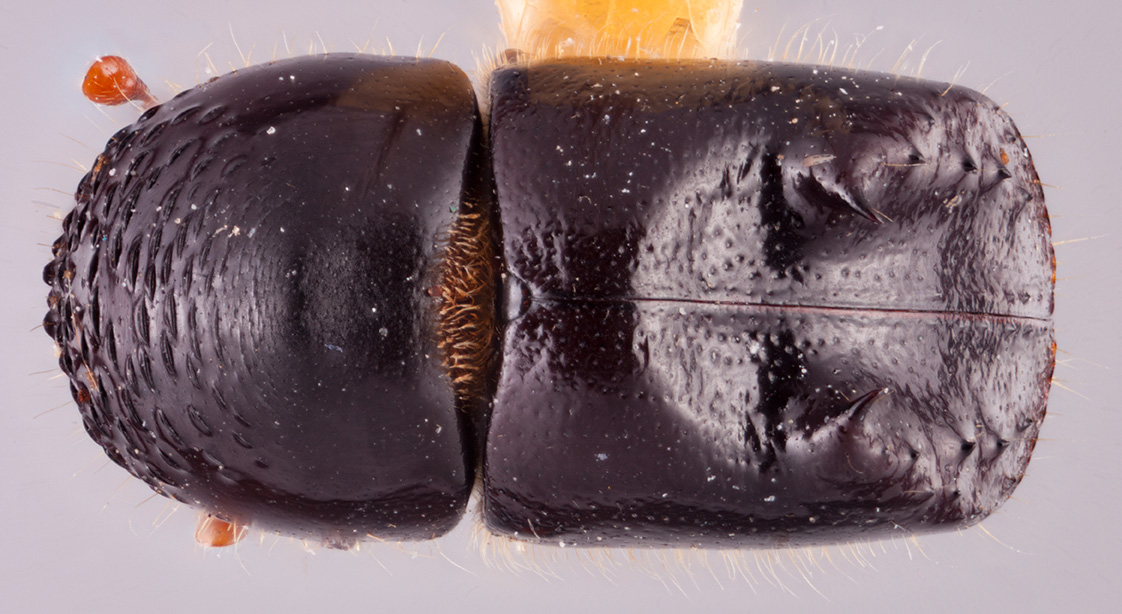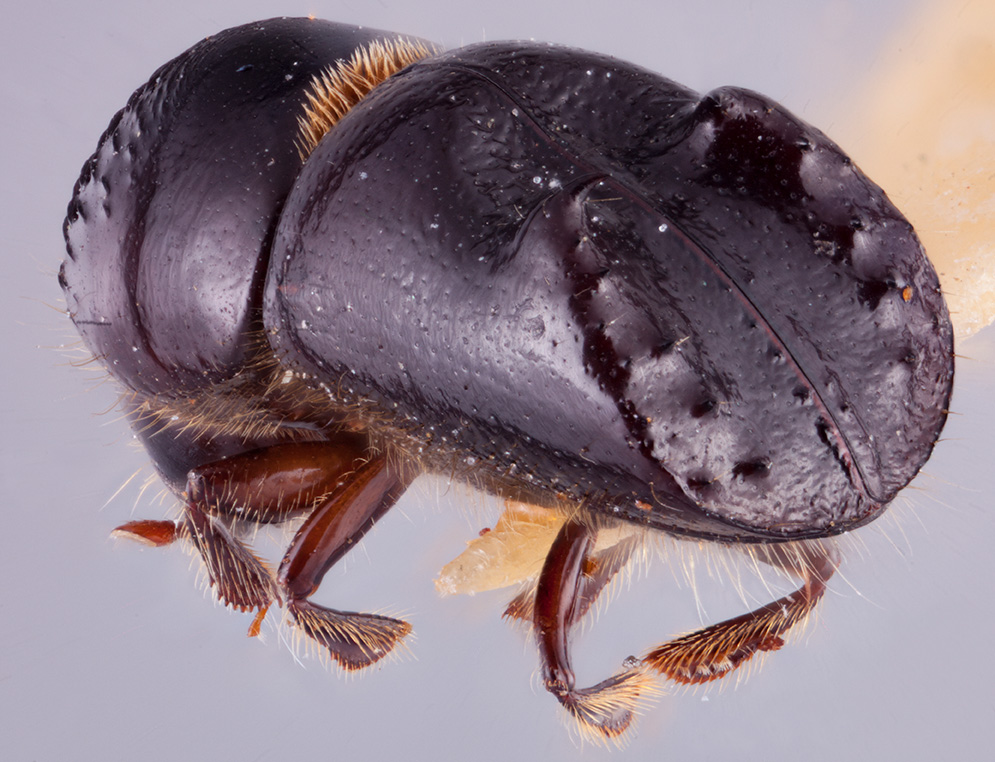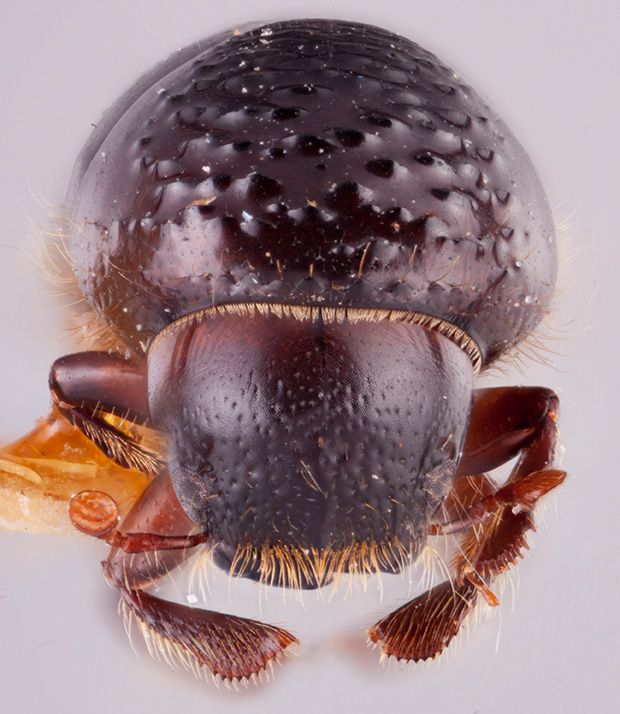Anisandrus percristatus
|
Anisandrus percristatus lateral; R.K. Osborn |
|
Anisandrus percristatus dorsal; R.K. Osborn |
|
Anisandrus percristatus declivity; R.K. Osborn |
|
Anisandrus percristatus frontal; R.K. Osborn |
Taxonomic history
Xyleborus percristatus Eggers, 1939a: 12.
Diagnosis
5.5 mm long (mean = 5.5 mm; n = 3); 2.12−2.2 times as long as wide. This species can be distinguished by the dense the mesonotal mycangial tuftmycangial tuft:
tuft of setae that denotes the mycangia exterior opening
 that extends laterally from the scutellumscutellum:
that extends laterally from the scutellumscutellum:
a shield-like sclerotized plate located at the midpoint of the elytral base
to striaestria:
punctures in rows, which may or may not be impressed to make grooves 3; posterolateralposterolateral:
3; posterolateralposterolateral:
relating to end of the side part/portion
 margin of declivitydeclivity:
margin of declivitydeclivity:
downward slope of either the pronotum or elytra
 carinate to interstriaeinterstria:
carinate to interstriaeinterstria:
longitudinal spaces along the elytra between the striae, which is not as<br />
impressed and bear smaller punctures.
 5; elytralelytral:
5; elytralelytral:
pertaining to the elytra
discdisc:
the flat central upper surface of any body part (e.g. pronotum and elytra) with a profound transverse saddle-like depression; declivitaldeclivital:
with a profound transverse saddle-like depression; declivitaldeclivital:
pertaining to the elytral declivity
basebase:
point or edge closest to the body; opposite of apex with very large incurved spinespine:
with very large incurved spinespine:
an elongate projection of the exoskeleton that is longer than its basal width on interstriaeinterstria:
on interstriaeinterstria:
longitudinal spaces along the elytra between the striae, which is not as<br />
impressed and bear smaller punctures.
 3, interstriaeinterstria:
3, interstriaeinterstria:
longitudinal spaces along the elytra between the striae, which is not as<br />
impressed and bear smaller punctures.
 3 with 4 additional equally sized and spaced denticles; declivitydeclivity:
3 with 4 additional equally sized and spaced denticles; declivitydeclivity:
downward slope of either the pronotum or elytra
 broadly sulcatesulcate:
broadly sulcatesulcate:
deeply furrowed or grooved
to interstriaeinterstria:
longitudinal spaces along the elytra between the striae, which is not as<br />
impressed and bear smaller punctures.
 5; elytralelytral:
5; elytralelytral:
pertaining to the elytra
discdisc:
the flat central upper surface of any body part (e.g. pronotum and elytra) sulcate anteriad to spinespine:
sulcate anteriad to spinespine:
an elongate projection of the exoskeleton that is longer than its basal width on interstriaeinterstria:
on interstriaeinterstria:
longitudinal spaces along the elytra between the striae, which is not as<br />
impressed and bear smaller punctures.
 3; large body size; body shiningshining:
3; large body size; body shiningshining:
appearing glossy or bright in luster; referring to a surface that is polished and reflects light well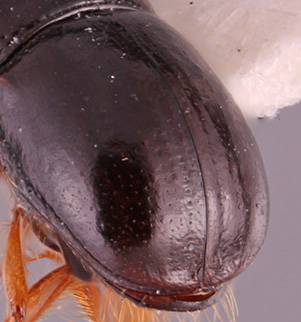 , appearing polished, largely glabrousglabrous:
, appearing polished, largely glabrousglabrous:
smooth, devoid of vestiture
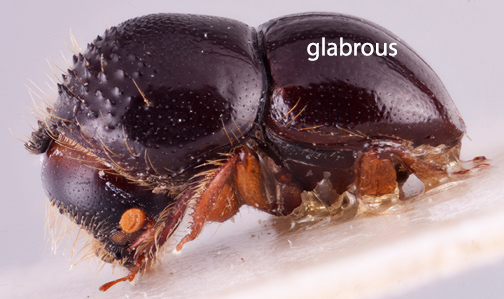 , minutely punctatepunctate:
, minutely punctatepunctate:
set with fine impressed points, appearing as pin pricks
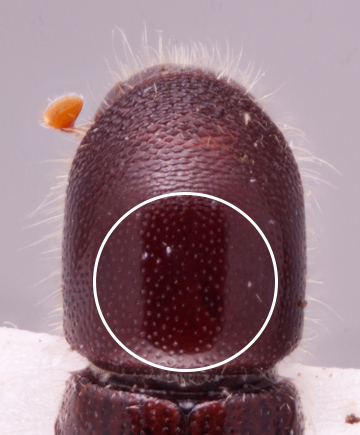 ; declivitaldeclivital:
; declivitaldeclivital:
pertaining to the elytral declivity
punctures confusedconfused:
of markings, having indefinite outlines or running together as lines or spots without definite pattern; usually referring to punctures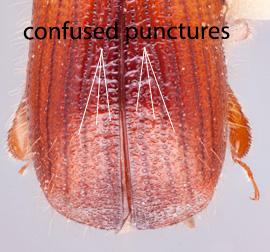 ; and pronotalpronotal:
; and pronotalpronotal:
pertaining to the pronotum
asperitiesasperity:
small flat denticle-like structures frequently arranged in rows or confined to specific areas
 very broad, fine, widely spaced.
very broad, fine, widely spaced.
May be confused with
Anisandrus auratipilus, A. hera, A. klapperichi, A. venustus, and A. xuannu
Distribution
China (Sichuan, Yunnan), Myanmar
Host plants
recorded from Schima superba (Theaceae) (Smith et al. 2020bSmith et al. 2020b:
Smith SM, Beaver RA, and Cognato AI. 2020b. A monograph of the Xyleborini (Coleoptera, Curculionidae, Scolytinae) of the Indochinese Peninsula (except Malaysia) and China. ZooKeys 983: 1-442. https://doi.org/10.3897/zookeys.983.52630)
DNA data
specimens not available for sequencing


